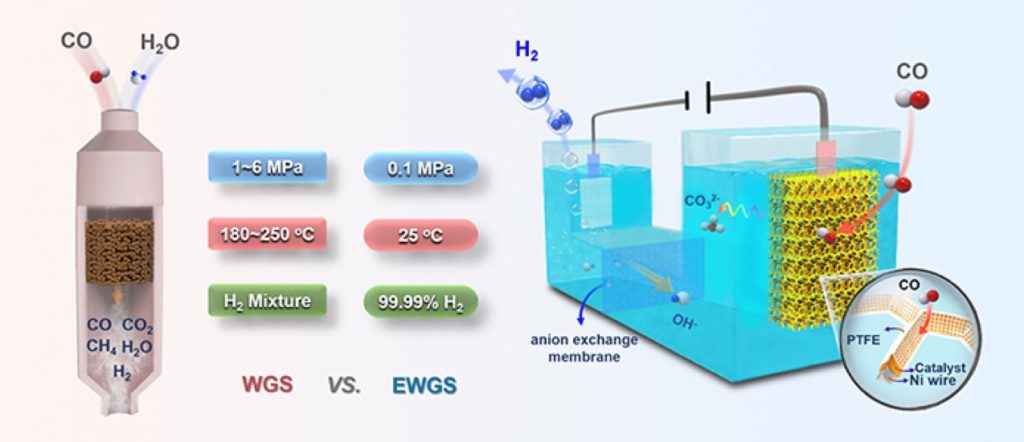China in Africa
Giza pyramid illuminated red to celebrate Chinese New Year
On Jan. 23, 2020. pyramids and the sphinx in Giza near Cairo have been shining in red in a ceremonial sound and light show as part of the celebrations of China’s Spring Festival, also known as the Chinese New Year.
Xinhua, January 23, 2020

No Results Found
The page you requested could not be found. Try refining your search, or use the navigation above to locate the post.
Window-to-China
Beijing wants to attract more global talents in S&T
According to Beijing’s Mayor CHEN Jining, the number of national high-tech enterprises in Beijing reached 25,000 in 2018. On average, 199 high-tech startups opened in the city every day, and the city has 80 startup firms each worth more than $1 billion. Beijing set up a 4.45 billion USD science and technology innovation fund for incubating new technology last year, supports multinationals which plan to set up R&D centers and hopes to attract more global talent in order to become a major innovation center of S&T.
CAS news release, January 17, 2019
High-purity hydrogen from an electrochemical shift reaction: CAS Dalian Institute of Chemical Physics
The team around DENG Dehui has found a new way for a highly energy-efficient conversion of water to hydrogen at room temperature by using an electrochemical vapor shift reaction. Water vapor shift reaction (CO + H2O → H2 + CO2) is the main method for industrially producing hydrogen on a large scale. However, the process is carried out at high temperature (180 ° C – 250 ° C) and high pressure (1.0 – 6.0 MPa). DENG’s team opted for an electrochemical method: CO is oxidized at a Pt/Cu anode, and the generated CO2 reacts with KOH to form potassium carbonate; at the cathode, water is directly reduced to high-purity hydrogen with nearly 100 % Faraday efficiency. Current density reached 70mA/cm2 at 0.6V, and the catalyst was highly active for 475 hours.
CAS news release, January 15, 2019

© CAS Dalian Institute of Chemical Physics
China’s Chang’e moon probe will carry out biosphere experiments
Professor XIE Gengxin of Chongqing University said a canister installed on the probe contained the seeds of cotton, rapeseed, potato, and arabidopsis, as well as eggs of fruit fly and some yeast, to form a simple mini biosphere. After Chang’e-4 landed on Jan. 3, ground control initiated to water the plants, and a tube directs natural light on the surface of the moon into the canister to allow the plants to grow. Images sent by the probe so far showed that a cotton sprout had started to grow, though no other plants were found growing. According to XIE, potatoes could be a major source of food for future space travelers. The growth period of Arabidopsi, is short and easy to observe. Yeast could play a role in regulating carbon dioxide and oxygen in the mini biosphere, and the fruit fly would be the consumer of the photosynthesis process.
CAS news release, January 16, 2019
China launches maritime silk road satellite data service
A satellite data service center has opened in Fuzhou, Fujian Province. Apart from standard data products, it will provide remote sensing date on land, forestry, environmental protection, water resources, agriculture, disaster alleviation, weather and oceans. By the end of 2018, the center had been received data from 26 domestic satellites covering central and southern Chinese provinces including Hong Kong and the Republic of China.
CAS news release, January 16, 2019
China held 16 million patents in 2018
According to an interview with the Director General of the National Intellectual Property Office SIPA, the number of invention patents owned by Mainland China (excluding Hong Kong, Macau and Taiwan) at the end of 2018 increased by 18.1% to 16.2 million. The number of invention patents held per 10,000 people was 11.5. The number of domestic trademark registrations increased by 32.8% to 18 mill. cases.
Japan JST China news, January 7, 2018
China pioneers unmanned sweeping car “spiral white” at Inner Mongolia Normal University
The car uses laser-positioning technology, ultrasonic radar and advanced AI software. It is a Level-4 car (no driver required self-driving is supported only in limited spatial areas).

China news, January 10, 2019
China and Russia will explore how to drill for water on the moon
According to Vladimir Khmelyov of the Altai State Technical University, an ultrasonic drilling project has won financing from Russia’s Fundamental Research Fund and China’s National Natural Science Fund. In this project, it will be explored how to use ultrasonic drilling of extraterrestrial surfaces to discover water and ice, Russia’s Tass News Agency reported. Based on indirect explorations, it is assumed that water is located close to the surface of craters up to 10 kilometers deep on the reverse side of the moon. Ultrasonic equipment could eventually be installed on lunar and Martian rovers.
CAS news release, January 17, 2019
China starts monitoring Beijing-Tianjin-Hebei region for CO2 emission
Due to massive emissions of pollutants from factories and vehicles, the Beijing-Tianjin-Hebei region tops the world in carbon emissions intensity, and studies of carbon dioxide and other pollutants in the air could better help China tackle smog. As described by an engineer of the Hebei Province Meteorological Bureau, meteorologists now use a plane equipped with a high precision carbon dioxide real-time monitoring system to fly at 11 different altitudes from 600 to 5,100 meters over Shijiazhuang, Hebei Province to measure carbon dioxide concentrations at different levels. China’s carbon dioxide monitoring satellite, TanSat, launched in 2016, was also set to focus on the Beijing-Tianjin-Hebei region this week to help scientists gather more data.
CAS news release, January 9, 2019
Beijing Railway Station will increase face identification for access, 3 seconds per passenger
Access to the railway station will increasingly be controlled by face recognition, in order to match with transportation rushes during Chinese spring festival.
Japan JST China news, January 9, 2019
China’s hydroelectric power generation in 2018 amounted to about 1.2 bill. kWh
According to the 2019 China Hydroelectric Power Development Forum, at the end of 2018 China’s hydropower plant capacity was 350 million kW, and annual power generation amounted to 1.2 trillion kWh. The annual power generation by the Three Gorges Dam exceeded 100 bill. kWh for the first time. By the end of 2018, approximately 640 medium- and large-scale hydropower stations with over 50,000 kW were built in mainland China and approximately 320 overseas hydroelectric power projects were under construction or completed by Chinese enterprises with a capacity of 81 mill. kW or more.
Japan JST China news, January 9, 2019
Beijing starts controlling Great Wall by drone
The multi-copter drone is in charge of 3D modeling with a precision at the centimeter level. By observing detailed changes of the Great Wall Cast body through long-term monitoring, forming big data will bring a scientific basis for future protection work. The fixed wing drone performs a long distance and widespread tour of the Great Wall, making illegal construction work impossible.

Japan JST China news, January 8, 2019
Team at CAS QIBEBT engineers Nannochloropsis microalgae to produce “designer triacyl glycerides”
A team around Jian XU at CAS Qingdao Institute of Bioenergy and Environmental Technology (QIBEBT) has found that two type-2 diacylglycerol acyltransferases (DGAT2s) from Nannochloropsis ocanica prefer linoleic acid (LA) and eicosapentaenoic acid (EPA). By modulating tanscript abundance of these two enzymes, strains were obtained which include high levels of LA and EPA into triacylglycerides.
CAS news release, December 28, 2018
Hi-Tech zones are the backbone of China’s innovation, but still lag behind Silicon Valley
According to a report of the CAS Institutes of Science and Development and a speech by science minister WANG Zhigang, 52.000 high-tech enterprises in China’s national high-tech zones – now 169 in total – contribute 11.5 % to the national GDP and export goods and services valued at 30.7 trillion Yuan. Companies in these zones spent 616 billion Yuan in R&D or 35 % of China’s total R&D expenditure. They host close to 3000 national research institutes including 341 “state-key laboratories”. However, all venture capital invested 2017 in China’s Hi-Tech zones amounted to just 39 % of venture capital flowing into Silicon Valley. The report stresses that over 37 % of Silicon Valley’s population is foreign-born, whereas only 1 % of staff in China’s Hi-Tech zones are foreigners.
CAS news release, December 26/27, 2018
Shale gas production in Southern Sichuan reaches 4.2 billion cubic meters in 2018
The main production area is located in the southeastern part of the Sichuan Basin around the five cities of Zigong, Zhangzhou, Leshan, Neijiang and Yibin. China’s shale gas reserves are ranked # 1 in the world, but geological conditions render exploitation difficult. In the above area, production has now reached 11 mill cubic meters per day, accounting for about 4.2 % of China’s natural gas production.
Japan JST China news release, December 27, 2018
CAS Shanxi Institute of Coal Chemistry reports progress on methanol-to-propylene synthesis
China at present commands a total production capacity of 1.46 million tons of methanol-to-propylene production equipment, but process performance is poor. In a national program implemented in 2011, considerable progress was achieved: a largely improved catalyst could be continuously used for more than 1000 hours, the overall methanol conversion rate was higher than 99%, selectivity for C3 was 45%, for C2 9%~13%, for C7 and heavy hydrocarbons less than 3%, and performance was stable after regeneration.
CAS news release, December 25, 2018
